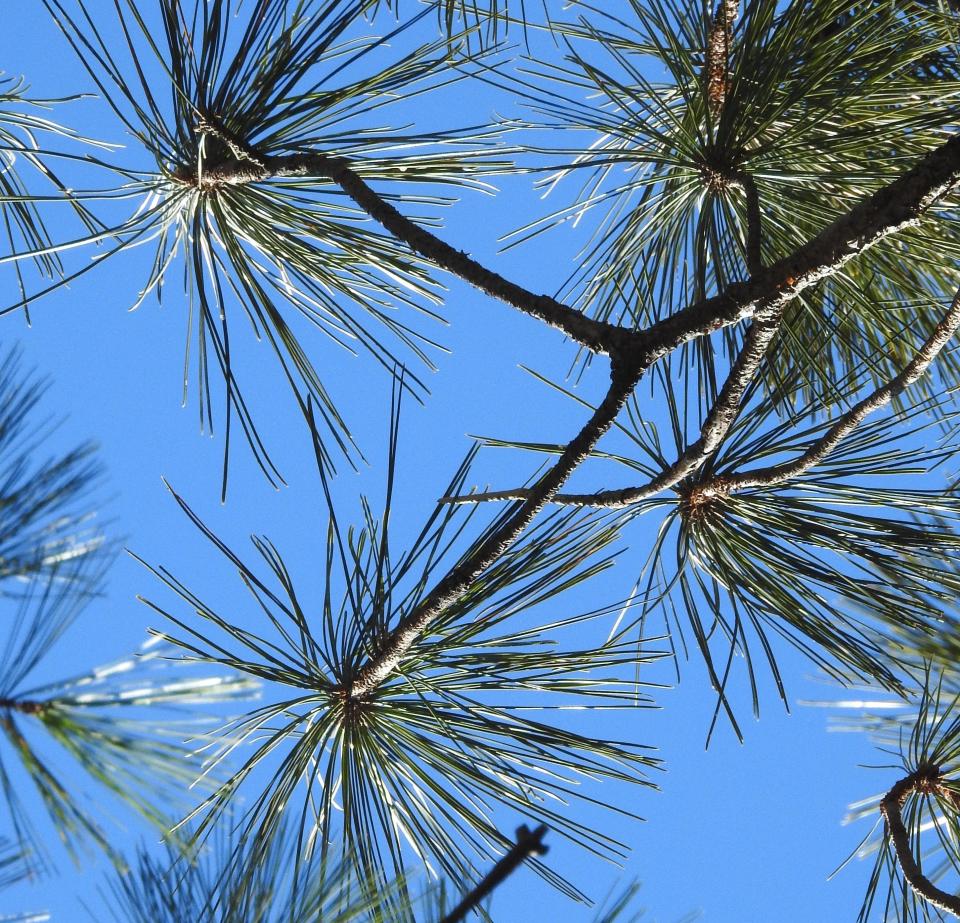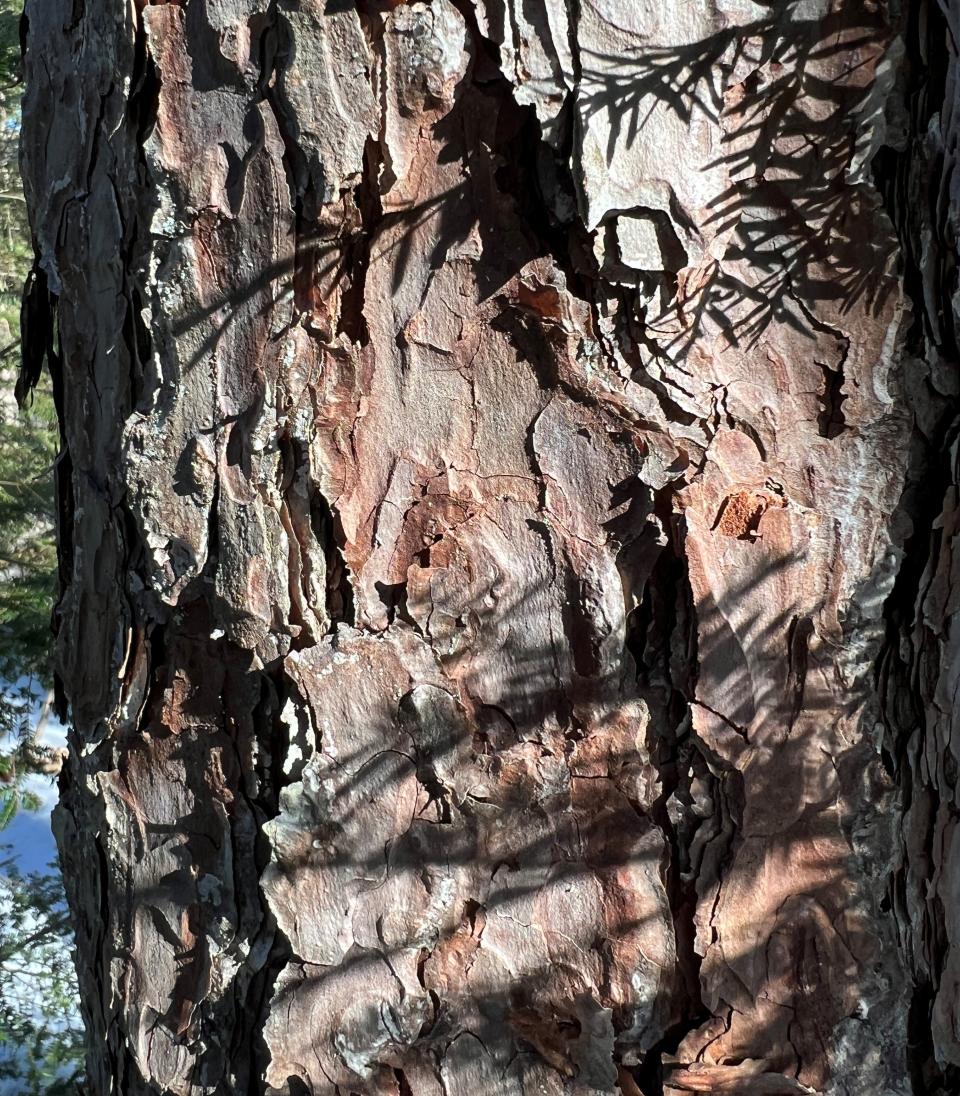One of the many things I enjoy about winter is how plants and animals that might blend in with the greenery during the rest of the year suddenly pop.
The bright orange beak and a subtle red tinge to the otherwise brown and gray feathers of a female cardinal, stand out against a backdrop of snow. Moss glows greens on a snow-crusted rock.
Likewise, one of my favorite pine trees, the red pine, also glows in the bright, low morning sunlight. Now that most of the trees have lost their leaves, its red bark is a beautiful counterpoint to the lacey green foliage of the hemlocks and balsam fir that hang out together in my woods. Therefore, now is a great time to look at these hidden treasures.

Red pines are tall, straight pine trees with lovely reddish bark. On mature trees, the bark separates into wavy, convoluted puzzle pieces. If you can reach the branches and needles, you’ll find the needles arranged in clusters of two (unlike the white pine’s clusters of five). The cones are egg-shaped, about two inches long, and born on short stalks. In nature, red pines rely on fire to clear out other trees (red pines need lots of light) and help prepare the soil. While it isn’t as fire-resistant as pitch pine, the bark is thick and somewhat heat-resistant, and the tree self-prunes. It rids itself of all those dead side branches you find on a white pine that provide excellent kindling in a fire and will not burn so hot.
Nature News: The ingenious strategies NH and Maine plants use to survive the winter
Red pines are fun to find in our area because they tell a story about how the land was used and planted years ago.
According to Tom Wessels in “Reading the Forested Landscape,” his book about New England’s natural history, “All stands of red pine in New England are plantations, unless they occur on dry, ledgy slopes-the native habitat of this species.” In the 1930s and ’40s, red pines and red pine plantations were planted across New England by the Civilian Conservation Corps. If you see a large group of red pines planted in straight rows, that is most likely a plantation, planted to replace white pines, which had succumbed to blister rot (a fungus) in the early 1900s. Red pines were considered a fast-growing cash crop tree, an excellent replacement for the beleaguered white pines. Ironically, red pines are now falling prey to an invasive insect – the red pine scale. Red pines weren’t always planted in large plantations. They were also planted in smaller, more haphazard stands in old, abandoned farm fields as a cash crop, but also to help stabilize the soil.

We have a little clump of five red pines growing amongst some white pines and eastern hemlock trees. This area used to be farmland. We have evidence of this in a “wolf” pine growing in the woods. Wolf pines are white pines with multiple spreading branches– evidence that they grew in the open (where their growing tips were eaten by pine weevils, causing the extra branching). They were often encouraged along field edges to provide shade for livestock (hence the other name, “bull” pine). My white pines and red pines are of equal size, and I imagine them growing around the wolf pine as the field was abandoned and no longer maintained. No more mowing for a hay field, no more grazing land for livestock.

But is this the real story of my red pines? According to “Forest Trees of Maine” (the Maine Forest Service, 12th edition), red pines prefer dry, rocky ridges or light, sandy soil. We definitely don’t live on a ridge, but do have an abundance of sandy soil, of the type you might find in the Kennebunk Plains. So, perhaps these red pines arrived here naturally. But, whatever their origin, red pines are beautiful trees and well worth a walk outside, even on the coldest days.
Susan Pike, a researcher and an environmental sciences and biology teacher at Dover High School, welcomes your ideas for future column topics. Send your photos and observations to spike3116@gmail.com. Read more of her Nature News columns online at Seacoastonline.com and pikes-hikes.com, and follow her on Instagram @pikeshikes.
This article originally appeared on Portsmouth Herald: How winter reveals the hidden beauty of red pines: Nature News
Signup bonus from





